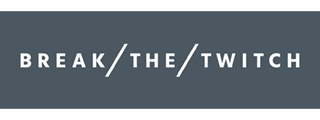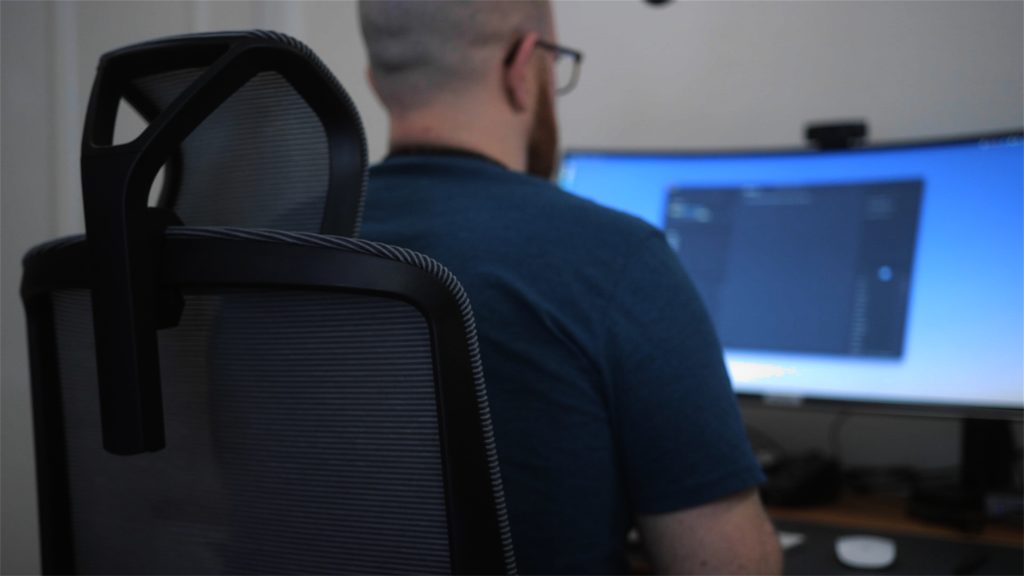
There are a million different productivity gadgets out there, and unfortunately, none of them do the work for us. One day, I’m sure our artificially intelligent overlords will figure it all out. For now, no gadget out there will magically improve your productivity or reduce your anxiety overnight. I’m willing to be wrong though; if you know of one, I’d sure love to know about it.
At the same time, there are things that can be very helpful in the pursuit of a focused life. Cultivating a focus practice will always take effort, but there’s an opportunity to meet ourselves halfway by adapting our environment, too. Over the years, I’ve found helpful tools for a focused workspace that create an inviting and peaceful environment to get my best work done.
If you notice a pattern of buying productivity solutions that don’t end up getting used much, it’s worth noting. But as long as you’re not just relying on picking up the latest gimmick or gadget, you’re fine! You’re the best judge of what you need and what’s right for you, so explore away. With that in mind, I want to share the things that I’ve enjoyed and found helpful in my own work.
Note: Some links are marked with ‘[aff]’ which means I have an established affiliate relationship with the company mentioned. On those items, I may receive financial compensation (typically between $5-$15 USD) if you make a purchase using one of my links. These proceeds go towards our work here at Break the Twitch and allow us to continue on. We appreciate your support!
Timeular Time Tracker
When I first saw this device a few years ago, I knew I had to try it out. The Timeular Tracker [aff] is a physical way to track time on various tasks without breaking away from the task at hand. Just flip the tracker so that the current activity is facing upwards, and it starts the timer on that specific task.
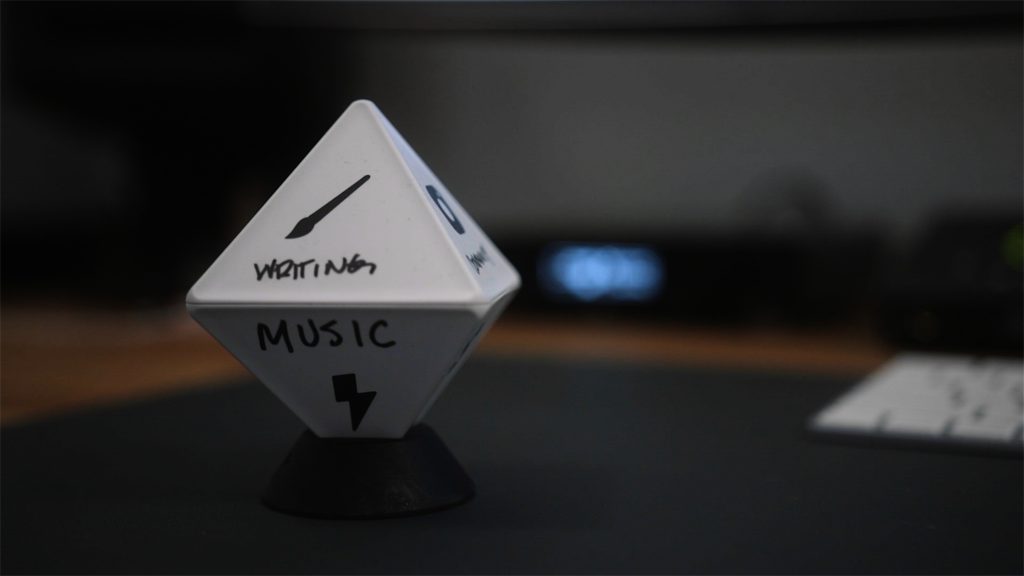
The tracking device is completely customizable and connects to your computer wirelessly using standard Bluetooth technology. The battery lasts a very long time (I’ve only replaced it twice so far), and everything integrates into their software right on your desktop. While it’s not completely automated, it’s still easy to see where your time is going.
If you need to track billable hours for client work, that’s an option as well. In general, having to stay conscious of task-switching by changing it manually really helps. When you’re paying attention to what you’re doing, it’s easier to avoid distractions.
Comfortable Office Chair
I’m currently using the Soutien Ergonomic Office Chair from FlexiSpot, the same company that makes the standing desk I have. FlexiSpot was kind enough to send over the chair for me to try out and share my thoughts on it.
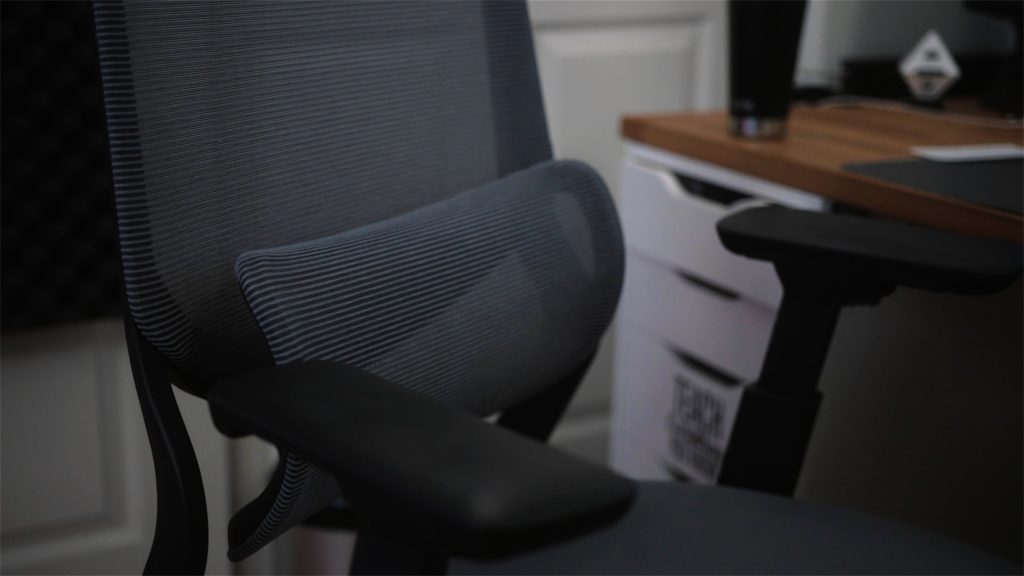
While standing is great, it’s not super convenient for editing big video projects or using my typical computer setup. Between all the cables, and heavier speakers and equipment on my desk, it’s just better to have it stay still. I’ve been much more comfortable at my desk for longer work sessions in this chair, and I enjoy using it quite a bit.
FlexiSpot Soutien Office Chair (Get $15 OFF) – https://bit.ly/3fuChGH [aff]
I’m somewhat tall at 6′ 2″, so I’d prefer if the arms came up just a bit higher. Other than that, the chair works well and is adjustable to fit most people. It’s definitely a good option if you’re looking for a fully adjustable chair for your office.
A Solid Pair Of Headphones
Music has always been a big part of my life, and I’ve really prioritized my listening experience. The professional sound/audiophile rabbit hole is an endless one, so be warned. A few hundred bucks can get you 95% of the way to a system that costs 10x more. I’ve found a mid-range setup that works quite well for me.
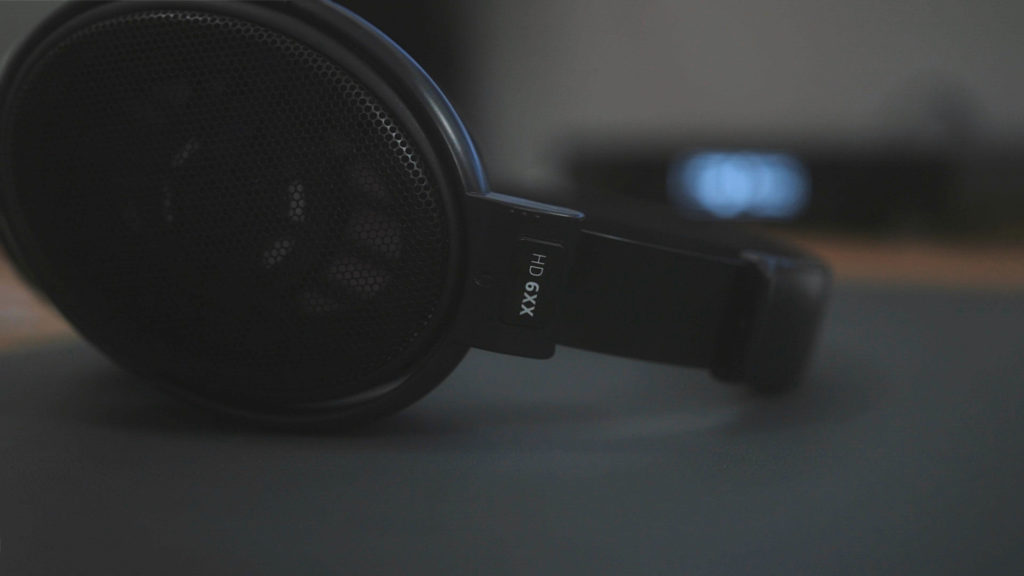
I constantly listen to music because it helps me focus on writing and other work. As such, a good pair of earphones is one of my most important tools for a focused workspace. I have a few different headphones, but I often choose the Sennheiser x Massdrop HD 6XX. It’s an exact copy of the Sennheiser HD 650—a headphone that costs more than twice as much. Sennheiser actually manufactures both headphones in the same factory, with the exact same parts. Massdrop does bulk orders for this hybrid version, which is why they’re able to offer them at half the price. If new to Drop.com, get $10 off your first order here—and I’ll get $10 for referring you.
Most experts recommend using a headphone amplifier with these, but it’s not completely necessary. As a final note, these are “open-back” headphones, so you can hear through them. If no music is playing when I have them on, I can easily hear Amy speaking to me. If you need more isolation from a noisy environment, look for something with a “closed-back”. That will seal off outside noise a lot better and isolate your listening experience.
Bird Sounds
Yes, that’s right. Bird sounds. There is some scientific evidence that nature sounds help ease anxiety and make you feel better, and I generally agree. Some days I’ll have this Spotify playlist playing on a small Bluetooth speaker in the corner of my office.
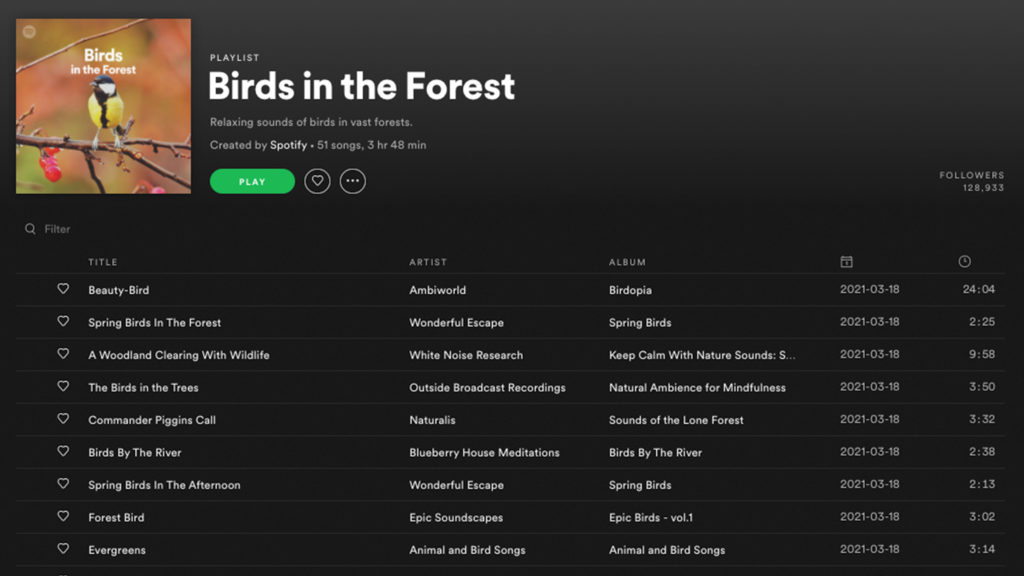
Throughout the day I feel myself sporadically experiencing that endorphin rush of being outside next to running water on a beautiful day with happy birds chirping. It’s funny feeling that, then remembering where the sounds are coming from. Catches me off guard a bit, but isn’t a let-down at all, it actually works quite well.
Soft Lighting
Most people don’t take issue with lighting until they’ve seen the light. The soft light, that is. Direct or “hard” light creates harsh shadows and reflections, and typically is rather unflattering on faces and spaces.
When taking pictures outside in direct sunlight, you will see the harsh shadows on people’s faces in your pictures. Soft light is just the opposite—flattering to features and doesn’t create harsh shadows in its wake. You can create your own soft light by diffusing light sources with paper, lamp shades, or anything that “filters” the light. I have a temporary setup that works well using lamp cords [aff] and cheap paper lantern balls [aff].
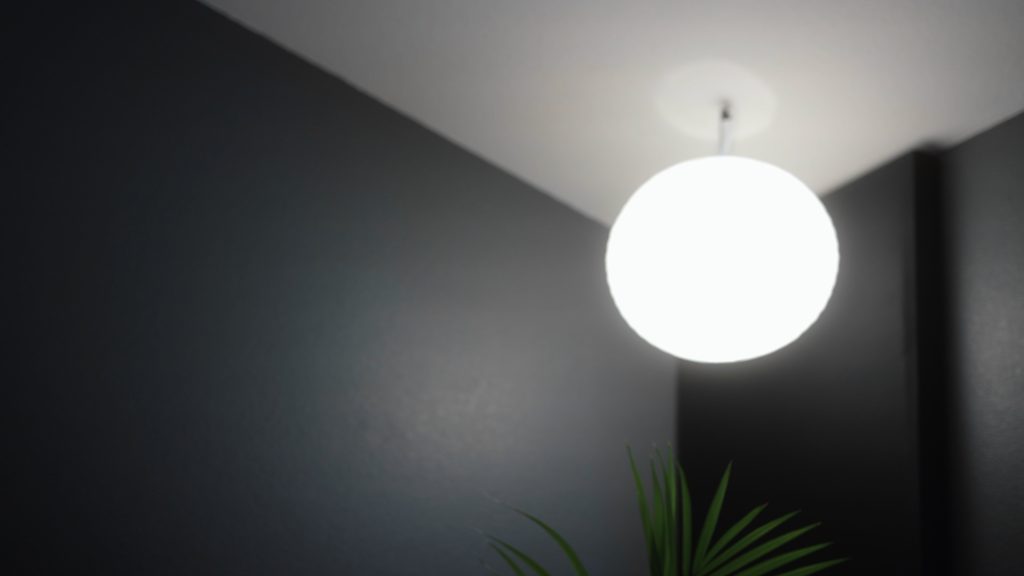
It’s actually surprising how much bad lighting can affect your mood, energy levels, and even give you headaches. You’d think more office buildings would realize that those flickering tube lights are actually causing a decrease in productivity. Oh well.
Silent Timer
I’ve been using a standard kitchen timer to practice pomodoro for a long time. This method uses alternating set times of work and rest periods, typically 25 minutes on and 5 minutes off. One problem is that most timers either flash, click, tick, or move in a way is incredibly distracting.
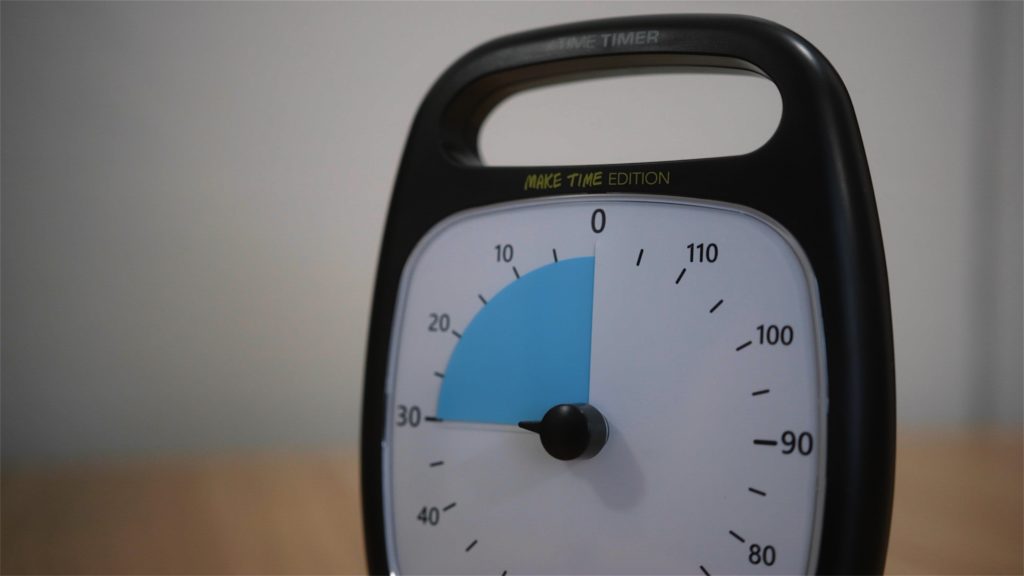
Enter: Time Timer [aff]. This came recommended by one of our lovely Attention Collective members. It didn’t take long for me to fall in love with this silent timer. I chose the two-hour model, which gives you a full 120 minutes of count down. A colorful wheel silently depletes as your time exits the quantum plane.
You can turn the beeping sound louder or silent it completely if you’d like. This timer is probably among my top three tools for a focused workspace. It’s a fantastic analog way to track work sessions, meditation sessions, and anything else requiring silence.
Acoustic Panels
I’ve found that this is one of the least considered tools for a focused workspace. Acoustic panels really change the energy in a room. A lot of the base-level noise in a room tends to go unnoticed, but subconsciously, we still process it. Rumbling air conditioning, traffic noise from outside, every click of the keyboard, all of these things generate audible commotion. It doesn’t stop there, though. If your room has mostly hard surfaces, each sound bounces on your walls and multiplies in effect. It’s like your room is repeating each sound back to you multiple times.
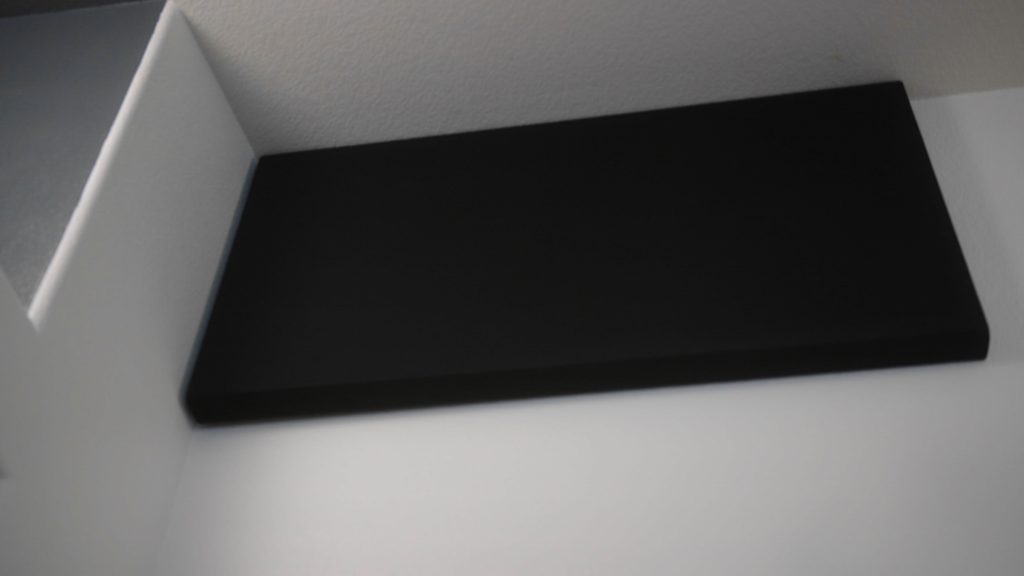
This is where acoustic panels, rugs, soft furniture, and blankets can really help break up that chaos. The first time I walked into my office after building and installing these panels the silence was actually shocking. In the following weeks, I felt so much more peace when spending long periods of time in that room.
If you’re consistently more irritable in certain areas of your home, this could be something to experiment with. It’s particularly bad in rooms with mostly hard surfaces and nothing soft to absorb the sound reflections.
Here’s a quick test you can try to see if this might help out your space. Point your hands toward one of the ceiling corners of your room, and clap hard over and over. If you hear a “flutter” response (multiple quick clap echos) you’re getting a lot of audible reflections in the room.
Living Plants
It took me too long to figure this out, but adding some foliage to your working space is a wonderful thing. Surrounding yourself with leafy green plants is pretty magical and really changes how it feels to be in a room. I like to imagine myself in a symbiotic relationship exchanging oxygen and carbon dioxide with them. A little weird? Sure. We help each other breathe and that’s kinda fun to think about.
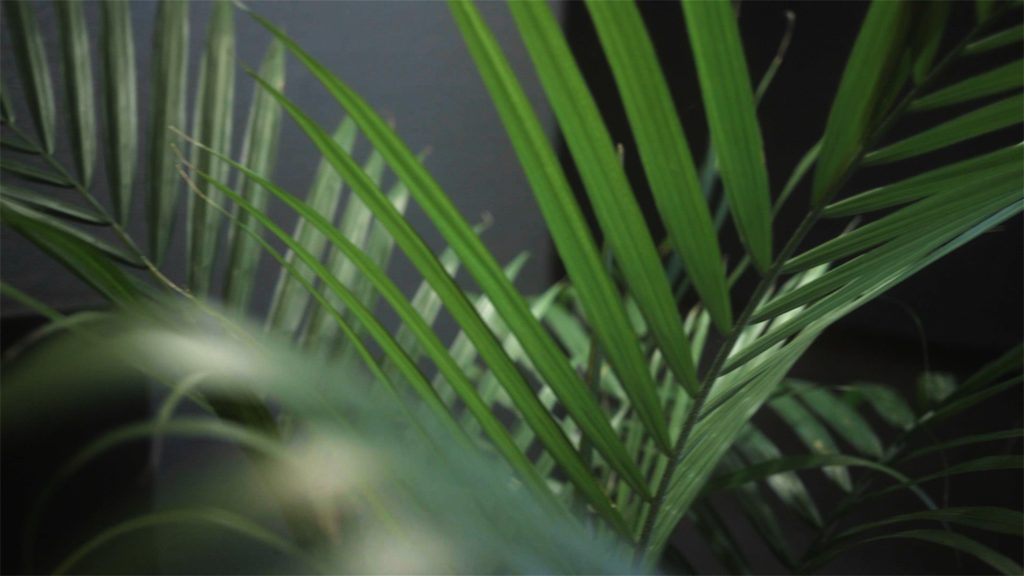
I don’t have any specific recommendations here because I’m still figuring out how to keep these things alive. I’m yet to have any idea whether I’m doing it right. In short, consider adding living plants to the list of tools for a focused workspace.
The Office Dog
Now, I’m not saying go out and get a dog if you don’t have one. But, there is something great about the energy that a pup brings to an office. When Rocky was a few months old, trying to work with him around was an absolute nightmare. Every 5-10 minutes he’d hop over to me and chomp down on my toes with his razor-sharp puppy teeth. I struggled to do very much focused work during that period of time, but it didn’t last very long.
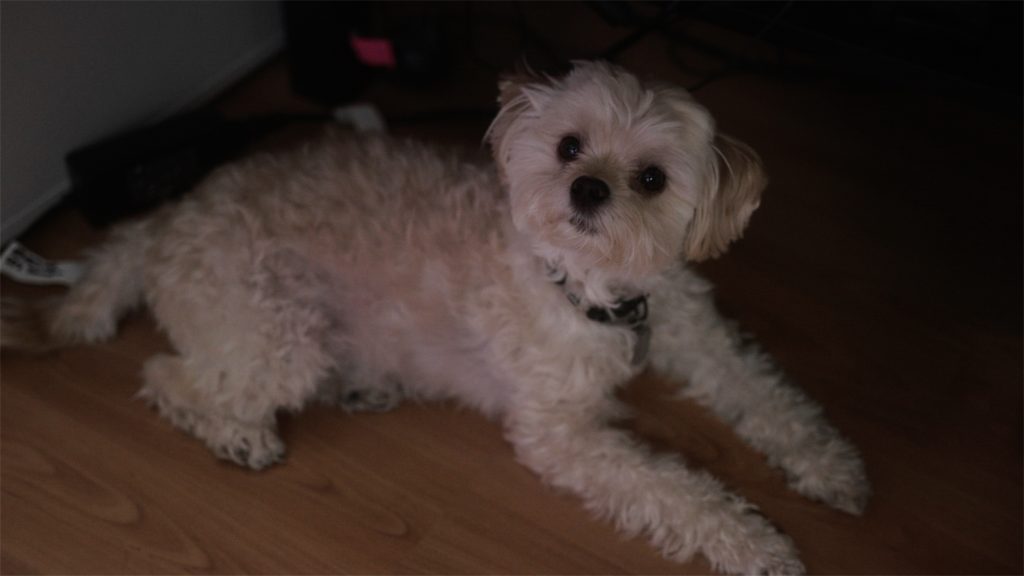
Now, Rocky serves as a faithful office couch companion and friendly reminder that I’ve been at the computer long enough. Wouldn’t a walk be so much more fun? Instead of biting my toes, he’ll just tap me on the leg with his paw, which is a nice change.
As I mentioned, there’s really no way to buy our way to productivity. Nothing I’ve found has magically fixed my anxiety or instantly improved my focus. I’ve always had to work hard at it, no matter what environment I’m in. That doesn’t mean it’s not worth experimenting, trying things, and following your intuition on what might help.
If something catches your eye, I’d appreciate it if any of these listed tools for a focused workspace are bought through my links. There’s no shame in trying things, even if it doesn’t work as you might have expected. Just make sure you’re giving yourself the space to put in small consistent efforts along with it, and you’ll be in a good spot. Good luck out there.
